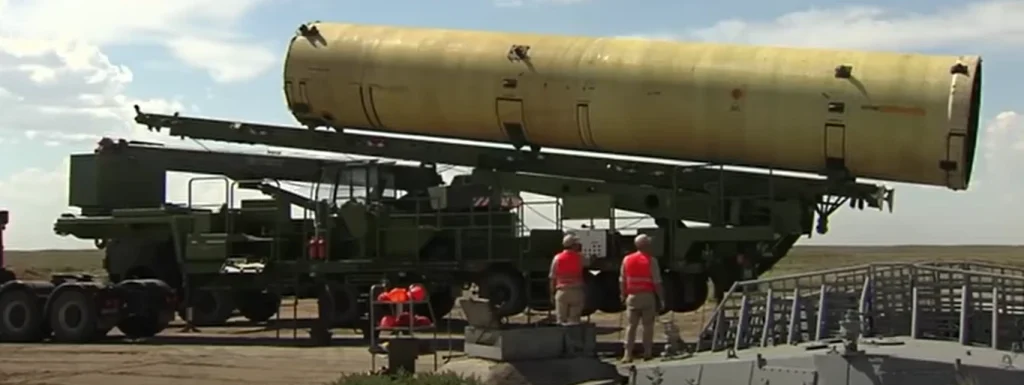On Tuesday, the Russian Defence Ministry said that a defunct Russian satellite was successfully struck during and ASAT tests The satellite’s fragments were entered into the catalogue of the Russian space control system and immediately placed under surveillance until they cease to exist, said the ministry.
The Russian foreign ministry blamed the US for pursuing the policy of using outer space for conducting combat operations and deploying offensive weapons since the 1950s.
“We draw attention to the fact that since the 1950s, the United States has been pursuing a policy of using outer space for conducting combat operations and deploying offensive weapons in order to attain military superiority and even overall domination in outer space,” it said.
Calling for an international legal instrument to prevent an arms race in outer space, the Russian Foreign Ministry Spokeswoman Maria Zakharova said on Tuesday, “Unlike Washington, Russia has never committed to paper in its doctrines a goal of attaining military superiority in outer space. On the contrary, from the very beginning of the space exploration era, we have been sticking to the policy of preventing an arms race in outer space and using it for peaceful purposes. Bearing this in mind, we think it necessary to waste no time and begin work on an international legally binding instrument to prevent an arms race in outer space.”
Satellite destroyed in ASAT test
As reported by Frontier India yesterday, Cosmos-1408, the satellite, is suspected to be to have disintegrated late Nov. 14 or early Nov. 15 Eastern time, based on commercial and government tracking data. Weighing about 2,000 kilograms, the satellite was launched in 1982. The defunct satellite was last tracked in orbit about 485 kilometres high.
The danger to the International Space Station
International Space Station (ISS) is located 40-60 km lower than the fragments of the destroyed satellite and do not endanger it, said the Russian Mod.
“Specialists of the Russian Defense Ministry used software for visualizing the space situation based on real data to simulate the movement of tracked and newly discovered space objects along with operational satellites and the International Space Station. The video images clearly indicate that the objects are moving along orbits with different inclination in various planes. The ISS is located 40-60 km lower than the fragments of the destroyed satellite,” the statement says.
The Russian space control system exercises continued orbital control with a forecast of the situation for each newly created space object, the ministry said.
“Since the time of their emergence, the fragments of the former satellite pose no threat to the ISS. The statements of alleged risks for the ISS are untrue,” the statement reads.

NASA expresses the concern over the safety of the ISS crew
NASA’s Administrator Bill Nelson expressed his concerns over the safety of the International Space Station (ISS) crew to Roscosmos CEO Dmitry Rogozin, Nelson said Tuesday.
“Spoke with Roscosmos DG Rogozin expressing dismay over the danger our astronauts and cosmonauts continue to face on the International Space Station,” the NASA Administrator said in his Twitter. “It’s critical that we ensure the safety of our people and assets in space – now and into the future.”
On November 10, the station had dodged a fragment of the Chinese meteorological satellite Fengyun-1C, which the PRC military shot down while testing anti-satellite weapons in 2007.
May threaten EU’s space activities – EC
European Commissioner for Internal Market Thierry Breton said Tuesday said: “The European Space Surveillance and Tracking System (EUSST) was immediately activated and has been monitoring the situation on a permanent basis to protect European satellites (Galileo and Copernicus) and those of the Member States from any danger of debris collision.”
Russian ASAT test
As per the Russian media, these tests, during which an unnamed anti-satellite missile was launched from the Plesetsk cosmodrome, took place on November 15.
Russia has published a navigation warning NOTAM, which closed for flights to a number of areas in the Barents Sea and the Laptev Sea for the period from 15 to November 17. The closure of such areas is associated with missile launches from the Plesetsk cosmodrome, and their configuration is markedly different from those that are closed during ballistic missile tests.
A Russian A-235 / PL-19 Nudol ASAT system is suspected to be have been launched from the Plesetsk Cosmodrome some 800 kilometres north of Moscow. Nudol has been tested at least ten times before as per open sources. Tests of Nudol began in 2014.
Russia has never used Kinetic Kill systems for ASAT and has tested it for the first time, as per some experts.
This is the fourth test of its kind in the post-Cold War period. Previously, the Chinese, American and Indian tests were carried out in succession.
The debris
1,500 monitored debris and hundreds of thousands of smaller space debris that now threaten the interests of all countries, State Department spokesman Ned Price said at a Monday briefing.
